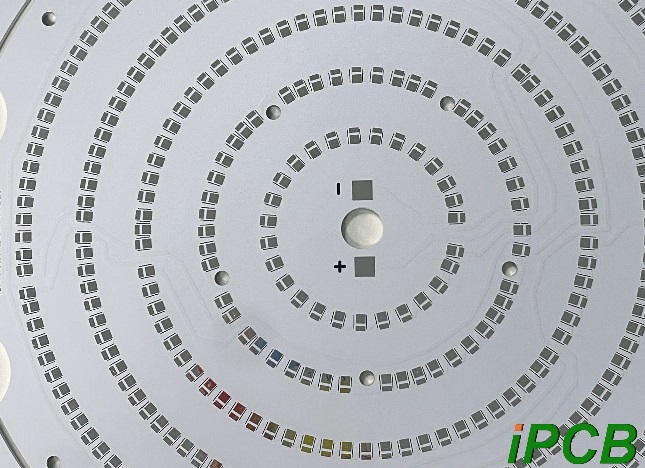LED PCB boards are commonly found in LED strips, lamps, displays and signs. They are also used in large numbers in automotive lights and medical devices. LED PCBs are becoming increasingly popular for a variety of uses because they are inexpensive, long-lasting, and work well. LED PCBs are required to create lamps and luminaires of outstanding quality and performance, so it is important to have the key elements of the right LED PCB design.

led pcb design
LED PCBs are the key to LED lighting systems. LED light sources have the following advantages:
-Compact size: LEDs are small, which makes them perfect for use in computers, smartphones, cars, floodlights, and traffic lights.
-Reduced Power Consumption: Most home lighting uses LEDs to save electricity. LEDs can reduce power consumption by around 80%.
-Longer life: LEDs last up to 25 times longer than traditional light sources.
-No Mercury: Normal light bulbs are bad for the environment because they contain mercury. This means that they need to be disposed of in special ways. LED lamps do not contain mercury, so they are easy to dispose of and are less polluting to the environment than traditional lamps.
-Efficiency: LEDs produce less heat than traditional bulbs. The energy used by LED lamps is used for lighting, not heating.
Most of the energy used by traditional light bulbs is released as heat. LEDs, on the other hand, use about 20% of the total energy. But even 20% of the heat can cause serious damage to the LED circuitry. There are a number of challenges in designing led pcbs that need to be addressed.
Creating an LED printed circuit board requires careful planning and design. Below are the steps for LED PCB design:
-Find out what type of LED you need, and what the voltage, current and power are.
-Choose the parts you need, like components, LEDs, resistors, and other components.
-Use software such as AutoCAD, Altium, or Proteus to create schematics and PCB layouts.
-Setting up design rules such as alignment width, spacing, and aperture size to clarify DFM manufacturability requirements.
-Additions to the placement of components, tracing and drilling.
-Make production files, including Gerber files, NC drilling files and other files, such as BOM lists.
-Do some testing to check that it works and that it doesn't overheat.
-The parts are put together and checked to make sure they are of good quality.
In order to maximize the performance of LED PCBs, there are several led pcb design factors to keep in mind.
-Thermal Management: It is very important that heat is removed from LEDs so that they continue to work well and last a long time. Using a metal core PCB or installing a heat sink can reduce heat buildup and prevent overheating.
-Current Control: It is very important to control the current accurately. This makes sure that the brightness stays the same and the LED does not burn out. A current limiter or constant current driver is often used to make sure that the current flowing through the LEDs is stable and accurate.
-Component Placement: The way the components are arranged is very important. If you put the LEDs and other parts in the right place on the PCB, the light will be spread out better and the lights will be brighter and more even.
-Layout optimization: It is very important to have a PCB layout that is optimised to maintain signal integrity and minimise electromagnetic interference (EMI). To get the best layout, it's important to design the signal routing, ground plane, and power supply wiring carefully. This helps to make sure that everything works well.
LED PCB design is different from other circuit board designs because it can generate a lot of heat. Thermal constraints are a key issue in led pcb design. In important LED applications, it is very important to control the temperature well. This makes sure that LED lights stay bright, last a long time, and work as well as possible.
You can use strategies such as aluminium cores, heat vents, and heat sinks to effectively get rid of heat generated by conductors and components. The way the parts are arranged and the way the LEDs are arranged make sure that the heat is spread evenly, which makes it reliable.
LED light PCBs have changed the way we light the world. Understanding the led pcb design and manufacturing considerations will enable you to make the right choice for any innovative modern lighting solution.